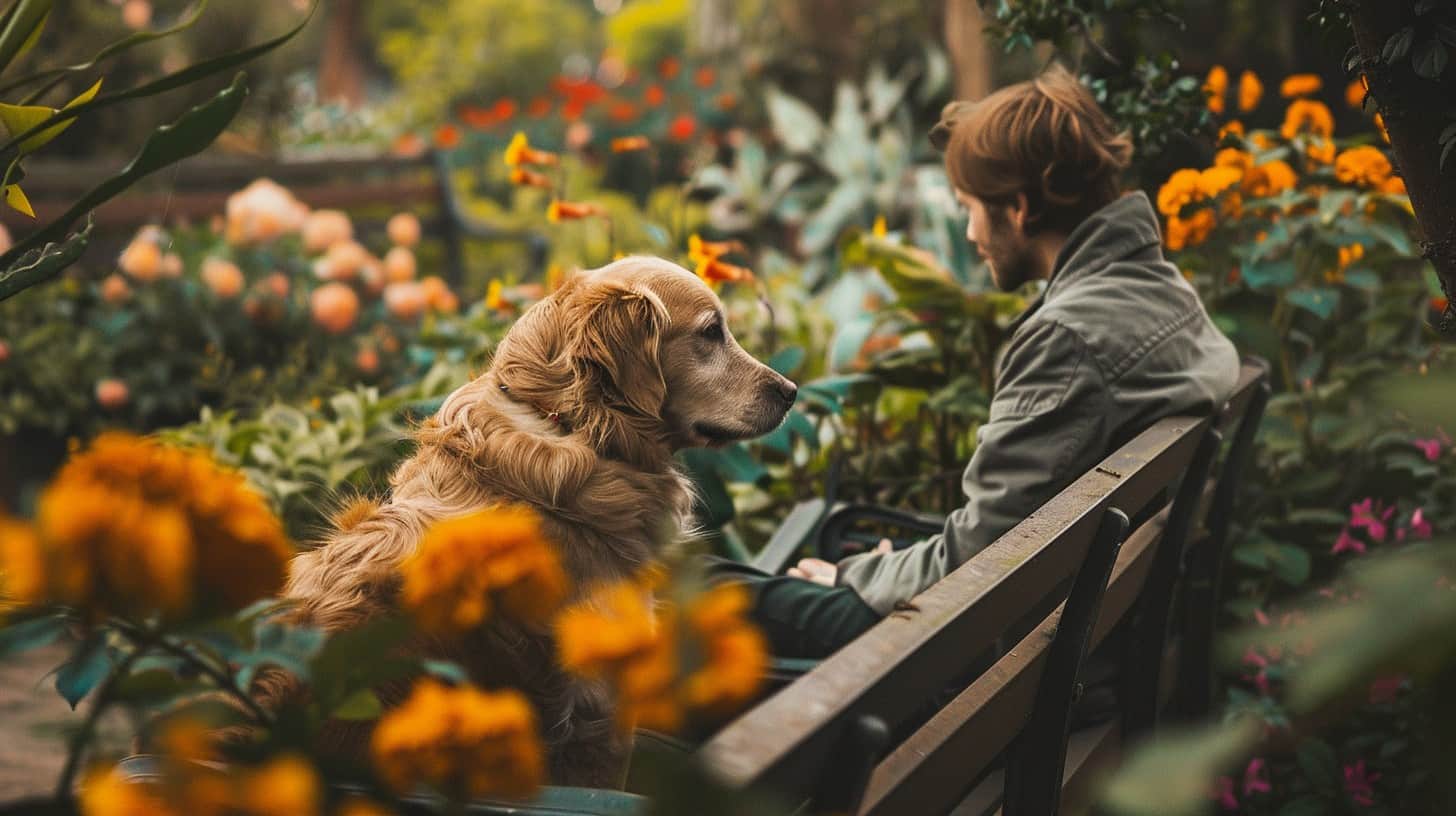Feeling down or stressed lately? Dogs are known to boost our mood. Today, we’re going to show you five ways dogs improve our lives, mentally speaking. Get ready for some tail-wagging facts…
Let’s fetch some happiness together!
Key Takeaways
Dogs give us unconditional love and loyalty, helping us feel valued and reducing feelings of loneliness.
Spending time with dogs can lower our stress and boost our mood, thanks to their playful nature and comforting presence.
Having a dog encourages physical activity like walking or running, which is good for our heart and overall health.
Dogs are great listeners, offering emotional support without judgment or the need for explanations.
They help increase social interactions, as walking them gets us out of the house and talking to other people.
Table of Contents
Dogs as the Ultimate Companions
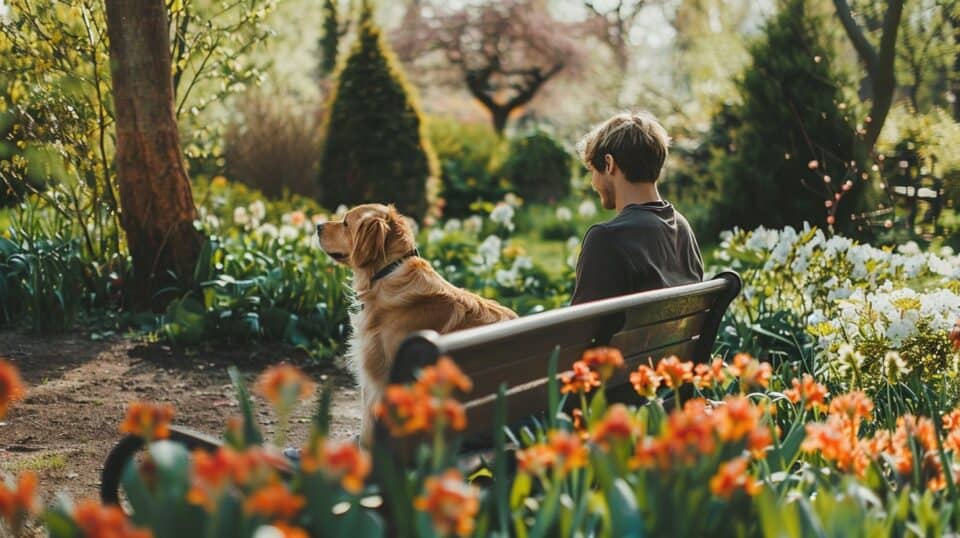
Ever heard the saying, “Man’s best friend”? Well, dogs live up to that title each and every day. They’re not just pets; they become part of your squad, ready to face whatever life throws at you with a wagging tail.
Loyalty and unconditional love
Dogs have a knack for loyalty that outshines even the best of human intentions. They stick to their owners like glue, never spilling secrets or judging harshly. Imagine coming home after a tough day, and there’s your furry friend, wagging its tail, happy just because you’re there.
No questions asked, no judgments passed—just pure joy at seeing you. They live in the moment, ready to create new memories with their favorite humans.
This unconditional love does wonders for mental health. It plants a sense of belonging and self-worth in men who might be facing loneliness or battling anxiety disorders. Dogs don’t care about your job title or how much money you make; they care about you—the real you—and that’s a powerful thing.
Next up: how these loyal companions turn into stress-busters…
Stress reduction and mental well-being
Having a rough day? Imagine coming home to a tail-wagging, happy-faced dog eager for nothing more than your happiness. These fur babies are stress-busters in disguise, always ready with a cuddle or playful gesture to take the edge off.
Spending just a few minutes petting your dog can calm nerves and boost mood—picture it as nature’s form of chill pill.
Your loyal buddy doesn’t need an appointment or copay—they’re on-call 24/7, dedicated solely to boosting your spirits. They sense when you’re down and out, offering their own brand of therapy that rivals any session on a therapist’s couch.
Whether it’s generalized anxiety gnawing at you or the weight of daily stresses piling up, having your canine companion by your side is like having a living, breathing reminder to pause and breathe…
Oh, and let’s not forget those walks! They sneak exercise into your routine, which is golden for both mind and body—a win-win if ever there was one.
Dogs versus Human Behavior
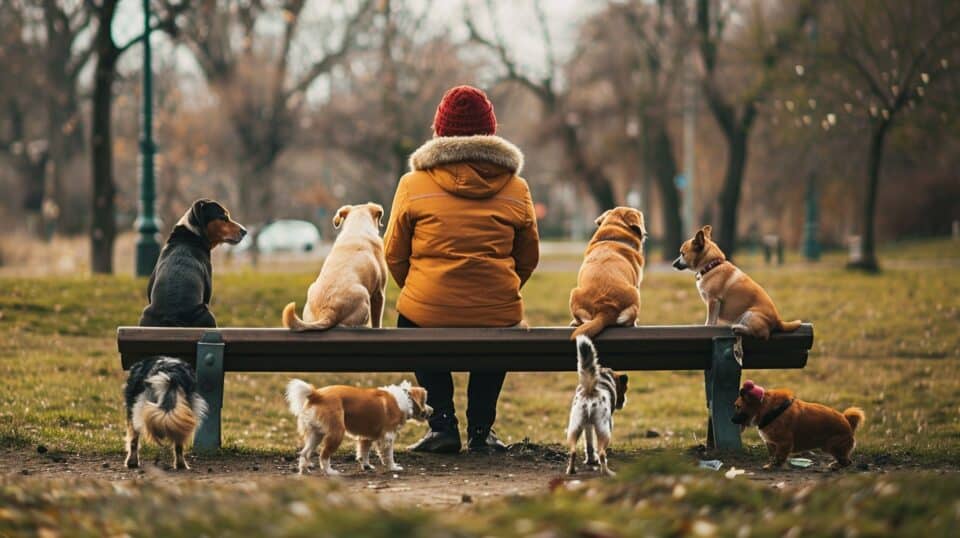
Ever had a pal who sticks by you, no matter the mess you’re in? Dogs do that – they don’t hold grudges like humans. They wag their tail, not their tongue – meaning, they listen more and judge less.
Forgiving nature of dogs
Dogs have a knack for forgiveness that, frankly, puts us humans to shame. They don’t dwell on the past. Missed a walk because you were too caught up with work? No problem. Accidentally stepped on their tail in the middle of the night? All is forgiven with a wag of their tail.
Their ability to live in the moment and move on from mishaps without holding grudges teaches us about true compassion and resilience.
Imagine coming home after a rough day, your dog doesn’t care if you forgot to buy their favorite snack or didn’t have time for that game of fetch they love. They’re just happy you’re there – no questions asked, no guilt trips given.
This forgiving attitude extends beyond daily interactions. It’s why therapy dogs do wonders in nursing homes, hospitals, and even help ease isolation for those dealing with mental health challenges like anxiety or depression.
And let’s not forget how innovations like wireless dog fences keep them safe while giving them freedom – yet another way we try to return their unconditional love and trust.
Non-judgmental and accepting
Ever had a rough day where everything went south? You trudge home, expecting judgment for the unmet goals or mishaps. But here’s the kicker – your dog greets you with the same enthusiasm, wagging tail and all, as if you’ve just won an award.
That’s because dogs are masters of acceptance. They don’t care if your socks match or if you’ve hit a rough patch; they’re all about living in the moment with their favorite human.
This unconditional support does wonders for mental health. Think about it – no need to explain or make excuses. Your furry friend is there, ready for cuddles or a walk, acting as a buffer against stress and loneliness.
Their presence cranks up those feel-good vibes, making it easier to tackle tomorrow with a clearer head… Moving into how these four-legged therapists offer more than just companionship unfolds another layer of their contribution to our well-being.
Dogs as Therapists
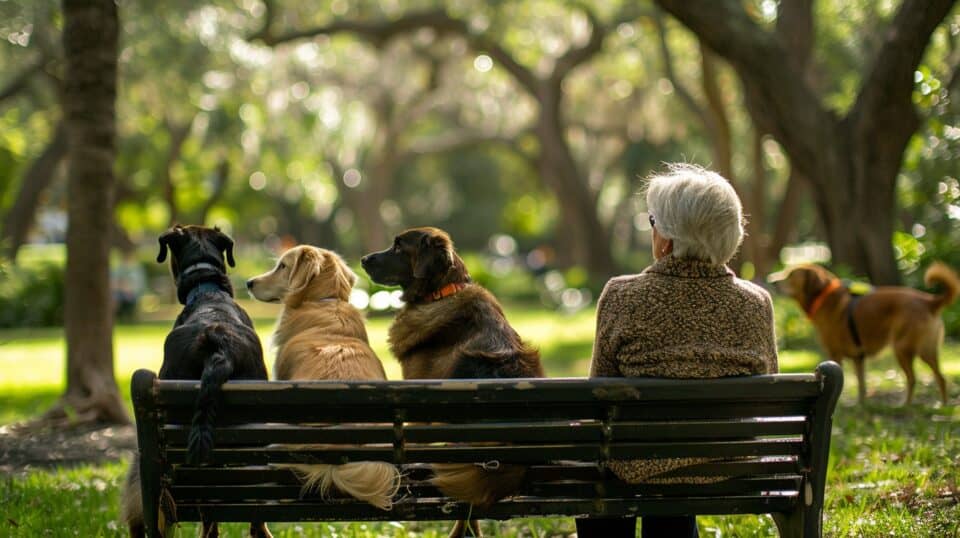
Ever heard of a therapist with fur and four legs? While many people now obtain an ESA letter online to officially recognize their dog’s therapeutic role, dogs are natural therapists—they listen without interrupting and comfort without judging.
Emotional support and understanding
Dogs have a sixth sense for emotional support. They’re always there, tail wagging, after a hard day to offer comfort without asking for anything in return. Imagine coming home to someone who’s overjoyed just because you walked through the door… that’s your dog for you.
They don’t need therapy sessions to understand how you feel. Whether it’s grief, anxiety, or just an off day, they quietly stand by your side.
Their presence alone can make things seem less overwhelming. Think of them as therapists who don’t charge by the hour but pay back in licks and cuddles. They listen without interrupting, comfort without judging, and are essentially on-call 24/7 for hugs and moral support.
Ready to get moving? Your loyal buddy is too—let’s talk about why dogs encourage us to stay active next.
Dogs and Health Benefits
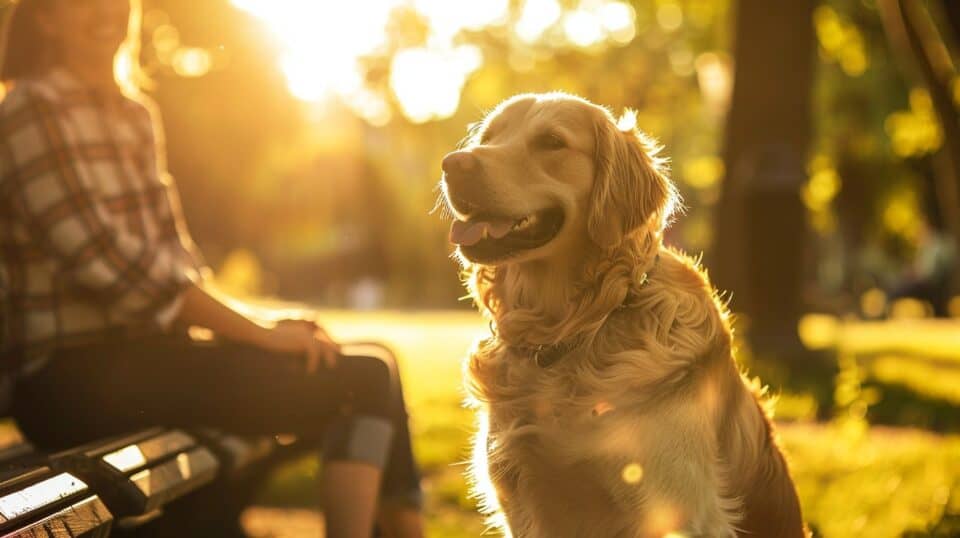
Walking your dog might just be the trick to shedding that dad bod—dogs push us to get up, move, and enjoy the fresh air. For more reasons why a furry friend is good for your health, keep reading…
Encouragement of physical activity
Dogs are natural motivators for getting up and moving. They need to walk, run, and play—perfect reasons for you to ditch the couch. This makes them great workout pals. You might start with a stroll around the block, but soon find yourself signing up for 5K runs together.
It’s not just about losing the dad bod—it’s about having fun and staying healthy.
Each time your furry friend wags its tail ready for a walk, think of it as a nudge towards better health. Running with your dog can lower blood pressure, fight heart disease, and keep those blood sugar levels in check.
Plus, it beats lifting weights alone in a gym any day. Fetch becomes more than just a game; it turns into an enjoyable way to stay active together.
Dogs as Personal Cheerleaders
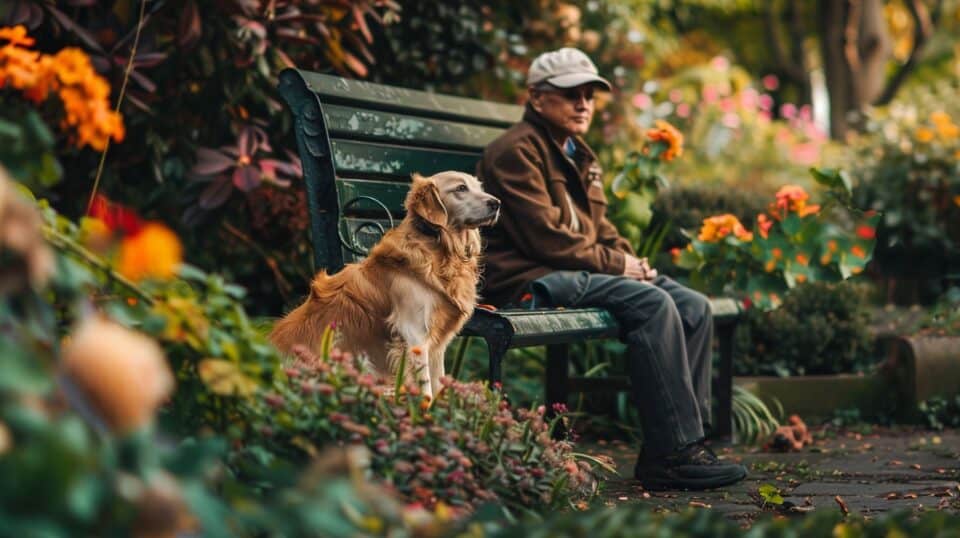
Ever feel like you’re missing a personal cheer squad? Well, dogs fill that gap perfectly, wagging their tails in excitement every time you walk through the door.
Constant companionship and enjoyment
Dogs are the pals who never bail on you, even if your plan is to lounge all day and binge-watch series. They’re pumped just to be by your side, making every moment a good time. No questions asked about your choice of show – they’re just happy watching anything as long as they’re with you.
This kind of companionship turns dull moments into memories worth cherishing.
Imagine coming home after a rough day… Your dog’s tail-wagging enthusiasm sweeps away any gloom. They’ve got this incredible power to make you forget the bad and focus on the now – together time, that’s pure gold.
Their constant presence means there’s always someone in your corner, ready for whatever life throws at you or eager for simple joys like a walk in the park.
People Also Ask
How can dogs help kick the dad bod to the curb?
Dogs are like personal trainers that don’t charge a dime. Walking them helps you lose the dad bod, gets your heart pumping, and improves your physical health without hitting the gym.
Can having a dog really make me feel less lonely?
Absolutely! Dogs are social butterflies that bring people together. Whether you’re at the park or joining a rescue group, they open doors to new friendships and lessen those feelings of being alone.
Do dogs do anything for anxiety or depression?
Yes, they do wonders! Petting a dog can calm panic attacks and ease anxiety faster than you can say “good boy.” Their presence is known to lower stress levels in people with generalized anxiety disorder (GAD) or major depression.
Is it true dogs can help with serious health conditions?
You bet! From reducing the risk of heart attacks to helping manage diabetes, dogs encourage a healthy lifestyle. They’ve even got a paw in therapy for Alzheimer’s disease and autism support.
How does adopting from an animal shelter benefit my mental health?
Adopting from an animal shelter not only saves a life but fills yours with joy too. It’s self-care on four legs—giving you purpose, companionship, and loads of unconditional love.
I’ve heard pets can improve child development; how so?
Growing up with dogs teaches kids empathy, boosts their social skills, and gives them confidence during playtime outside leash length away from screens—a win-win for emotional well-being!
